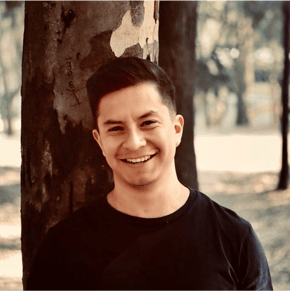In Ecuador, violence linked to organized crime has escalated sharply in recent years, particularly in port cities like Guayaquil, where drug trafficking, territorial control, and criminal rivalry converge. But beyond physical violence lies a more insidious layer: the digital presence of criminal groups, and their ability to influence, recruit, and shape public perception through online platforms.
To better understand this dimension, AKTEK iS was engaged to investigate:
- How criminal groups were using digital platforms to influence vulnerable communities
- What recruitment mechanisms were being used, mainly to target youth
- How widespread the online acceptance or normalization of organized crime had become
The ultimate goal was to help local and international stakeholders design more effective prevention strategies, backed by intelligence, not assumptions.
Our Approach: Social Media Intelligence Monitoring at Scale
Over one month, AKTEK deployed a series of automated social media monitors using AKTEK iQ Social to capture public, open-source digital content across platforms, including Facebook, TikTok, YouTube, and X (formerly Twitter). These monitors were designed to target both structured and informal digital behaviors, focusing strongly on youth exposure and gang narratives.
The investigation covered multiple monitor categories:
- Digital Presence & Perception Monitors: Tracked how criminal groups presented themselves online and how users engaged with or normalized their presence in key provinces and neighborhoods.
- Influencer & Lifestyle Narrative Monitors: Captured the content and language of social media influencers who glorified gang life, highlighting how particular aesthetics, slogans, and personas resonated with youth in high-risk areas.
- Recruitment Mechanism Monitors: Focused on identifying how gangs use music, memes, coded hashtags, and TikTok videos to attract or condition young followers.
- Security Sentiment Monitors: Analyzed how the public perceived crime, safety, and state response, particularly in communities with elevated gang activity.
Each monitor was built around relevant keywords, hashtags, influencers, and geographies, based on an initial research framework informed by on-the-ground knowledge.
What We Discovered
The investigation revealed a digitally fluent, socially embedded, and geographically targeted strategy by criminal groups to influence, recruit, and build soft power online, especially among vulnerable youth.
- Recruitment through lifestyle and identity: Criminal organizations framed themselves not just as gangs, but as alternative communities offering protection, opportunity, and belonging, especially to youth lacking family or educational support.
- Romanticized content spread via peer and influencer channels: Gang-affiliated imagery, music, and coded language were disseminated widely on TikTok and Facebook. This content portrayed gang life as aspirational, highlighting money, respect, loyalty, and fearlessness.
3.png?width=848&height=458&name=Blog%20Link%20Preview%20Image%20(2)3.png)
- Platform-specific behavior:
- TikTok was used to normalize gang culture and indoctrinate audiences through music, memes, and storytelling.
- Facebook was used for recruitment coordination and outreach, with direct calls to action in group posts.
- WhatsApp links surfaced in public posts, suggesting closed-channel communication among recruits or affiliates.
- Direct evidence of recruitment activity: Public posts in several neighborhoods included explicit requests to join gangs, updates from “active” members, and offers of work (including for sicarios).
- Geographic concentration of exposure: Digital activity tied to gang promotion and recruitment was especially concentrated in:
- Monte Sinaí
- Bastión Popular
- Durán
- Isla Trinitaria
- Criminal presence widely normalized: In these areas, gang identity had become part of digital youth culture. Language, emojis, slang, and song lyrics tied to gangs were part of how young people expressed themselves online.
- Public mistrust in government and police: Sentiment analysis showed widespread frustration with the state. Gang members were often perceived as more powerful, reliable, or present than institutions meant to protect the public.
323.png?width=353&height=585&name=Blog%20Link%20Preview%20Image%20(2)323.png)
- Gender dynamics: While many women were involved in promoting criminal narratives online, others were targets of online shaming or threats for associating with gangs, highlighting a complex and often overlooked gender dimension.
These weren’t fringe behaviors. They were signs of a low-friction digital ecosystem where gangs could shape culture, build influence, and expand their networks with minimal resistance.
From Intelligence to Actionable Prevention
Our AKTEK iS team structured these insights into several weekly reports delivered through AKTEK iO, allowing partners to navigate the digital landscape clearly, filter by theme or geography, and identify where intervention could be most effective.
This investigation laid the groundwork for developing evidence-based prevention strategies that recognize the digital space as a key battleground for influence, resilience, and early intervention.
Why It Matters
Organized crime in Ecuador isn’t just operating in the streets. It’s shaping identity, belonging, and influence online. Vulnerable youth are being targeted not through force, but through content, culture, and connection.
Addressing this requires more than content moderation. It requires structured intelligence and partnerships that understand how digital ecosystems drive behavior.
At AKTEK, we help organizations see what’s really happening, connect fragmented signals, and act where it matters.
To learn how our intelligence services can support your mission in digital resilience, prevention, or community protection, contact us at contact@aktek.io.


.jpg?width=300&name=Blog%20Link%20Preview%20Image%20(27).jpg)
-1.png?width=404&height=471&name=Blog%20Link%20Preview%20Image%20(2)-1.png)